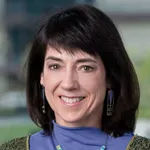 BIO-X IIP SEED GRANT PROJECT - 2010
BIO-X IIP SEED GRANT PROJECT - 2010
SANOFI-SUPPORTED BIOSTAR SPONSORED RESEARCH PROJECT - 2011
Daria Mochly-Rosen (Chemical and Systems Biology)
Helen Bronte-Stewart (Neurology and Neurological Sciences)
Ricardo Dolmetsch (Neurobiology)
Huntington’s disease (HD) is a fatal autosomal dominant neurodegenerative disease. Although the genetic mutation associated with the disease has been identified, the molecular and cellular basis of HD is not understood and treatments for this disease remain a challenge. Basic research and clinical studies indicate that mitochondrial dysfunction plays a central role in the pathogenesis of HD. Proper mitochondrial function is maintained by mitochondrial dynamics, i.e. an increase in mitochondria number (by fission) and a decrease in number (by fusion). Disruption of the balance between mitochondrial fusion and fission, resulting in excessive mitochondrial fission, has been suggested to have a role in neuronal injury in various HD models. Thus, in this proposal, we plan to test the HYPOTHESIS that Excessive Mitochondrial Fission contributes to the pathology of Huntington’s Disease.
Recent success in generating neuronal cell cultures from patients with neurological diseases enables, for the first time, to study disease mechanisms in the context of cells derived from patients. It also enables testing the ability of drugs to inhibit the neuropathology. In this proposal, we plan to generate such human neuronal cells from control and HD patients, by differentiating induced pluripotent cells isolated from these subjects. The studies will provide novel insight into the role of excessive mitochondrial fission and mitochondrial dysfunction in the pathogenesis of HD. We will also utilize peptide inhibitors that selectively inhibit mitochondrial fission machinery that we have recently developed and test them in the neuronal culture models of HD. Together, this two-year project will generate novel information on the role of mitochondrial fission impairment in the pathogenesis of HD and will provide useful model systems to study HD pathology in neurons derived from patients with the disease. We will also generate pharmacological tools to inhibit HD pathogenesis as a first step in the development of novel therapeutics for Huntington’s disease.



